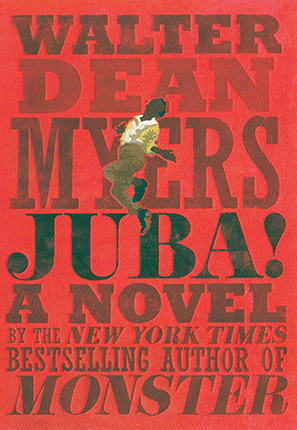Full Text Reviews: Booklist - 07/01/2015 Having plumbed the archives for information about the nineteenth-century dancing sensation known as Juba, Myers pieces together a fictionalized account of his extraordinary life in this posthumous novel. Set in the Five Points district of New York City, the story begins with teenager William Henry Lane’s dream of becoming a dancer. At a time when slavery is still practiced and black entertainers are expected to clown in minstrel shows, Juba, as he is called, wants to be known for his talent. Dancing with the speed and inventiveness of a young man possessed, he earns a reputation that eventually allows him the opportunity to tour Britain. Juba’s passion, determination, and optimism—and position as a free man—during a time rife with racial injustice make his story unique. (Note that period-appropriate use of the n-word may prompt classroom or dinner-table discussion.) Vintage illustrations and news clippings, and the incorporation of historic figures, further help to bring him to life. Though Juba meets a sad and premature end, his story offers an intriguing glimpse into America’s past. HIGH-DEMAND BACKSTORY: Among the last books written by the award-winning Myers, who died in 2014, this will surely receive substantial attention and interest from his many fans. - Copyright 2015 Booklist. School Library Journal - 08/01/2015 Gr 6 Up—William Henry Lane, also known as Master Juba, was a famous dancer in America and England in the 1840s. Myers's final novel uses historical sources to piece together a picture of what his life might have been like. Juba grew up a free black man in the Five Points neighborhood of New York City, and his dancing was influenced by the Irish style. He encountered Charles Dickens after an early performance, who subsequently reviewed the dance in his American Notes. Historical images are provided throughout. Unfortunately, the author's choice to make this a first-person narrative makes some aspects of the exposition problematic. Young readers may not understand what minstrel shows were, and the context of the narrative is inadequate to convey why Juba would have been adamant about staying away from this form but ultimately began to participate in it. Richer back matter would have enhanced the overall quality of the book. VERDICT This will have appeal to readers who are interested in the history of dance or the antebellum period of American history.—Kristin Anderson, Columbus Metropolitan Library System, OH - Copyright 2015 Publishers Weekly, Library Journal and/or School Library Journal used with permission. Loading...
|



